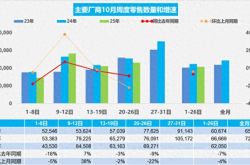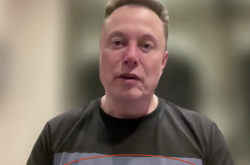Meituan Faces "Share Life-or-Death Line" as Takeout Market Transforms
![]() 07/31 2025
07/31 2025
![]() 620
620
Produced by | He Xi
Typeset by | Ye Yuan
Despite a declining marketing volume across various companies, the landscape of the takeout market continues to evolve subtly.
On July 28, Taobao Flash Sale and Ele.me jointly announced that their daily order volume exceeded 90 million orders for the past two consecutive weekends (excluding free purchases and self-pickup), marking an increase of 10 million compared to previous periods.
Recently, Meituan announced its daily instant retail order volume surpassed 150 million. However, industry insiders' analysis reveals that "Pinhaofan" contributed over 35 million orders, and "Shenqiangshou" over 50 million, with most of these being low-cost or free purchases. A former Meituan executive confirmed that since mid-June, Meituan's daily average paid takeout order volume has consistently stabilized at around 90 million.
Comparing these sets of data, excluding non-standard orders like free purchases, Taobao Flash Sale's core order volume has already "matched" that of Meituan, and its number of valid orders may even slightly exceed Meituan's.
How could such significant changes occur in the takeout market, long dominated by a single player, in such a short period? What impact will Taobao Flash Sale's rapid rise have on Meituan? And where will this takeout transformation lead?
This article delves into the factors behind Taobao Flash Sale's rapid rise, exploring its impact on Meituan and the possible direction of this takeout "transformation".
01
Behind Taobao Flash Sale's Rapid Rise
In China's fiercely competitive instant retail market, Taobao Flash Sale has achieved astonishing growth, transitioning from Ele.me's daily order volume of 20 million to the current 90 million. Some attribute this rapid rise solely to "marketing subsidies," but this view is too narrow. While marketing factors play a role, they are not the primary driver. Taobao Flash Sale's rise is more attributed to the takeout market's development trend and Alibaba's business strategy.
First, Taobao Flash Sale's explosive growth embodies Alibaba's strategic will, not a short-term defensive move but a strategic-level operation. When JD.com and Meituan were engaged in fierce competition in late April 2025, Alibaba seized the opportunity to upgrade its "hour-long delivery" service to "Taobao Flash Sale," establishing a prominent entrance on the Taobao App homepage. This decision set off a chain reaction.
In late June, Ele.me merged with Fliggy into Alibaba's China Retail Business Group, enabling centralized goals and unified operations. This adjustment provided unprecedented resource support for Taobao Flash Sale: 1 billion Taobao users and 160 million Ele.me members share traffic, and Tmall brand resources and Ele.me supply chain merchants participate, broadening Taobao Flash Sale's service scenarios. This resource integration endowed Taobao Flash Sale with "e-commerce price range + instant retail speed advantage" from the outset, laying a solid foundation for its subsequent rapid growth.
The second key to Taobao Flash Sale's rise is its alignment with the trend of large consumer market integration. Unlike traditional takeout platforms focused on food delivery, Taobao Flash Sale established an ecological positioning of "everything can be flash-purchased" from the start. Coupled with Taobao and Tmall's inherent product supply advantages, it creates new consumption increments through category breakthroughs, scenario innovation, and experience reconstruction.
The strategic breakthrough in non-food categories is Taobao Flash Sale's most significant differentiator. Relying on Taobao and Tmall's rich category advantages, the platform expanded instant retail from food takeout to full-category consumption. Data shows that when Taobao Flash Sale's daily order volume reached 80 million, non-food orders numbered 13 million, covering diverse categories like food and beverages, mother and baby products, personal care and household cleaning, home appliances, alcohol, and 3C digital products.
Especially notable is the addition of brands, representing a unique model innovation. Recently, Taobao Flash Sale announced that the number of newly-joined brands in July increased by 110% month-on-month, with leading brands like Moutai, Xijiu, vivo, Li Ning, and MCM collectively joining, turning thousands of stores into instant delivery stations, opening up new commercial possibilities for brand operations.
Taobao Flash Sale's differentiated strategy is also evident in the reconstruction of consumption scenarios, such as "late-night healing specials" and "weekend stay-at-home stockpiling festivals," significantly enhancing user stickiness and purchase frequency. These models expand the new consumption scenario of "buy anytime online, get it promptly offline," blurring the boundary between e-commerce retail and near-field retail. For example, during summer, orders for fans and even air conditioners placed through flash purchases are also growing.
Overall, Taobao Flash Sale's rapid rise is not a simple subsidy war but a manifestation of major industry trends and the collaborative efficiency and business model innovation of Taobao and Ele.me.
02
The Impact of Taobao Flash Sale's Order Volume Exceeding 90 Million on Meituan
Having discussed the key factors behind Taobao Flash Sale's rise, let's examine its impact on Meituan after its order volume surpassed 90 million. Taobao Flash Sale's order volume "matching" that of Meituan will bring at least the following impacts:
First, China's takeout market landscape will undergo a fundamental transformation. Long dominated by Meituan with a market share once reaching 70%, this imbalance was broken this year. JD.com's entry exceeded 25 million daily orders in just a few months, followed by Taobao Flash Sale's strong rise to over 90 million orders in just over two months.
Market data from Taobao Flash Sale and JD.com takeout indicate that while Meituan still holds advantages in the takeout market, the single-player dominance has shifted.
Another significant data point in Taobao Flash Sale and Ele.me's joint announcement, often overlooked, is the stable 96% order punctuality rate. Rider networks and delivery timeliness have always been the "foundation" of Meituan's local lifestyle ecosystem, not just the infrastructure for "fast delivery" but a systematic barrier locking together "local traffic, real-time data, and fulfillment capabilities."
The data that Taobao Flash Sale's daily order volume exceeded 90 million for two consecutive weekends with a punctuality rate stable at 96% suggests that Taobao Flash Sale is on par with Meituan in logistics, warehousing, and delivery technology. In other words, the rider delivery network is no longer exclusive to Meituan. Notably, the significant scale effect from Taobao Flash Sale's order growth is expected to rapidly reduce delivery costs. As Taobao's order-taking platform becomes more prevalent and merchants become more familiar, operational efficiency may further improve.
Second, beyond the market and delivery network, Taobao Flash Sale's rise will also bring profit pressure to Meituan. As Meituan's core revenue source, the profitability of its takeout business faces dual pressures from market saturation and cost increases. To maintain market share, Meituan may need to maintain high-intensity investments, impacting profits.
Another challenge for Meituan stems from Taobao Flash Sale's unique business model. As part of the Alibaba ecosystem, Taobao Flash Sale can divert traffic to the entire Taobao platform, with Taobao and Tmall supplies joining the takeout field. Its strategic value lies not just in instant retail profitability but in the traffic and user stickiness it brings to the entire e-commerce ecosystem. JD.com also has a similar near-field and far-field cycle, while Meituan's takeout business independently bears profitability pressure with weaker synergistic effects from similar ecosystems. This difference in business models may make Meituan less resilient than Taobao in long-term model upgrades.
More importantly, the competition between Taobao Flash Sale and Meituan goes beyond order volumes, profoundly affecting consumers' mental cognition and usage habits. For a long time, Meituan has established a strong association of "takeout = Meituan" in users' minds, a mental monopoly underpinning its market dominance. However, Taobao Flash Sale's rise is breaking this perception and reshaping consumers' expectations and behavior patterns towards instant retail. The growth from 80 million to 90 million orders occurred after marketing became more low-key, indicating this momentum is likely to continue.
A city general agent of a leading tea brand revealed that the order volume on the Ele.me platform recently surpassed that of Meituan takeout, even reaching twice as much. This weakening of platform loyalty is particularly detrimental to Meituan, whose business model relies on high-frequency use and stable retention.
It's worth noting that the impact on users' mental cognition depends on long-term effects. If, like past ride-hailing wars, established usage habits and cognitive associations persist even with decreased investment, this new scenario will be successful. The above analysis shows that Taobao Flash Sale's order volume "matching" that of Meituan's may have a greater impact than anticipated. Taobao Flash Sale will be a major competitor for Meituan in the future.
03
Where Will This "Takeout War" Lead?
Above, we discussed Taobao Flash Sale's rise and its impact on Meituan with an order volume exceeding 90 million. Next, let's explore possible directions for this "takeout war." In China's Internet commerce history, perhaps no competition is as intense as the current "takeout war," intertwining model innovation, technological iteration, ecosystem integration, and consumption habit reshaping. This is a battle for position in the trillion-yuan instant retail market and even the entire future retail ecosystem. However, in this complex arena, a single advantage is insufficient; fulfillment efficiency, ecosystem synergy, and compliance form the "iron triangle" determining victory or defeat.
Alibaba has constructed a fusion model of "far-field e-commerce + near-field retail" by integrating Ele.me, the Taobao and Tmall supply chain, and the Hema warehousing network. It reconstructs consumption scenarios through "search and delivery," converting 400 million daily active users into instant retail traffic and stabilizing the order punctuality rate at 96%. Meituan adopts a dual-track strategy of "defense + expansion." On one hand, it increases front warehouses to 30,000 through the "lightning warehouse" model, consolidating its position in high-frequency categories like fresh produce and daily necessities. On the other hand, it actively defends against JD.com's encroachment on 3C digital products and Taobao's on apparel and beauty products. JD.com has chosen a differentiated path of "quality takeout + logistics reuse," attracting high-quality merchants (like Luckin Coffee and Haidilao) with the "zero commission + full social security" strategy and ensuring delivery stability with full-time riders.
Additionally, with policies like the "Guiding Opinions on High-Quality Development of the Instant Delivery Industry," rider rights protection has shifted from an "option" to a "requirement." All parties are actively ensuring transportation capacity stability and social recognition.
In this competition, the battle for users' mental cognition is crucial. Meituan focuses on establishing a strong perception of "fast delivery for anything," Taobao Flash Sale creates a new impression of "everything can be flash-purchased," and JD.com strengthens its differentiated label of "quality instant delivery." Consumer research shows that 42% of users use all three platforms simultaneously. This means that after subsidy tides recede, what truly retains users is no longer price but the "definite experience" – reliable full-category instant services when needed.
At this point, we can generally predict the direction of the takeout war. Simply put, competition in the instant retail market will not end with a "winner-takes-all" outcome but will inevitably evolve from chaos to division of labor.
In the short term (1-2 years), new platforms will grow rapidly, and Meituan's market share may drop below 50%, with food takeout's share potentially declining further. Taobao Flash Sale will gradually capture 35-50% of the market with its traffic advantage, especially in differentiated categories like apparel and beauty products. JD.com will hold a 10-15% market share.
In the medium term (spanning 3-5 years), technological competition will be pivotal. As unmanned delivery systems (including drones and robots) and AI scheduling optimization become more prevalent, fulfillment costs are anticipated to drop by 30-40%. Furthermore, category expansion will emerge as a new focal point: if Meituan can slash the delivery time for 3C products to within 25 minutes, it may tip the scales against its competitors; similarly, if Taobao achieves "instant delivery from brand flagship stores," it could potentially redefine the rules of the retail industry. Consequently, the penetration rate of instant retail is projected to surge from the current approximately 7% to 15%, translating into a market size exceeding 2 trillion yuan.
Looking ahead to the long term (post-2030), ecosystem integration and regulatory reconstruction will take center stage, with innovative models largely established. "Service optimization" will become increasingly critical. By seamlessly integrating the entire local lifestyle chain (e.g., Meituan + Xiaoxiang Supermarket + hotels and travel, Taobao + Ele.me + Fliggy), user lifetime value (LTV) will be enhanced, and industry benchmarks will be set in areas such as rider rights, merchant splits, and data sharing.
Returning to the question at hand, where will this "takeout war" lead us? The answer is unequivocal – it will ultimately transcend the realm of takeouts and emerge as a transformative force in reshaping the foundational logic of China's retail industry. Platforms that cultivate compound advantages in fulfillment efficiency, ecosystem synergy, and compliant development, while genuinely serving consumers, providing incremental value to merchants, and innovating new scenarios, will be more likely to emerge victorious in this marathon.
Once the dust settles, we will witness the dawn of a new retail era characterized by greater efficiency, inclusivity, and an enhanced ability to cater to the aspirations of a better life.








